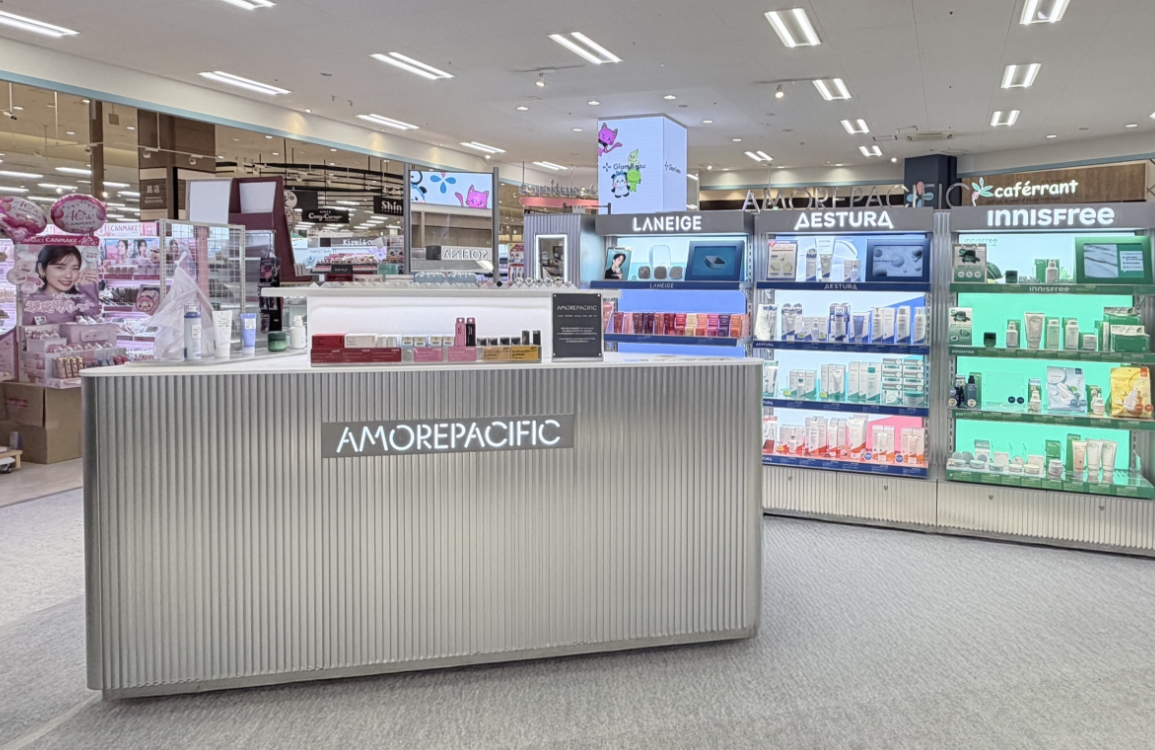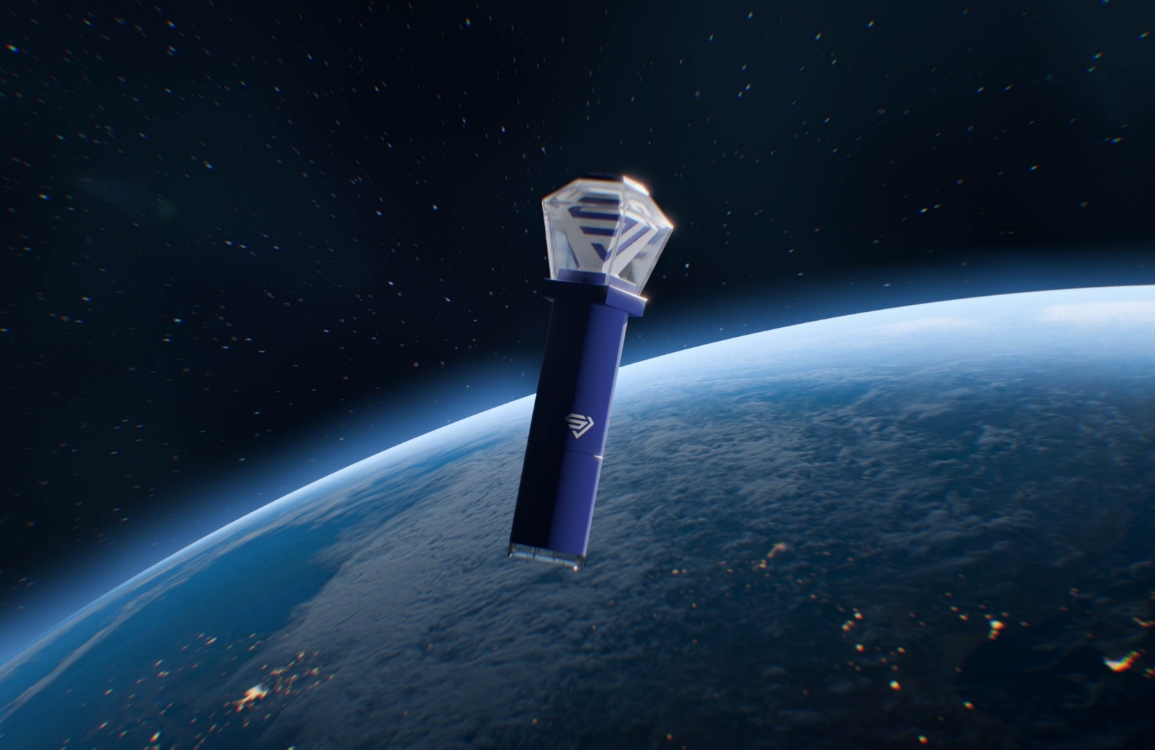Sustainable is Beautiful
Summary
What if we created new beauty with the materials we created and discarded? The process of plastic and glass bottles, waste paper, and waste being reborn as objects with a mixture of coincidence and intention shows how diverse the resources around us can change. Through two exhibitions spanning from Busan to Seoul, we hope to convey the story of the new beauty we discovered and the sustainability we discovered in the process.
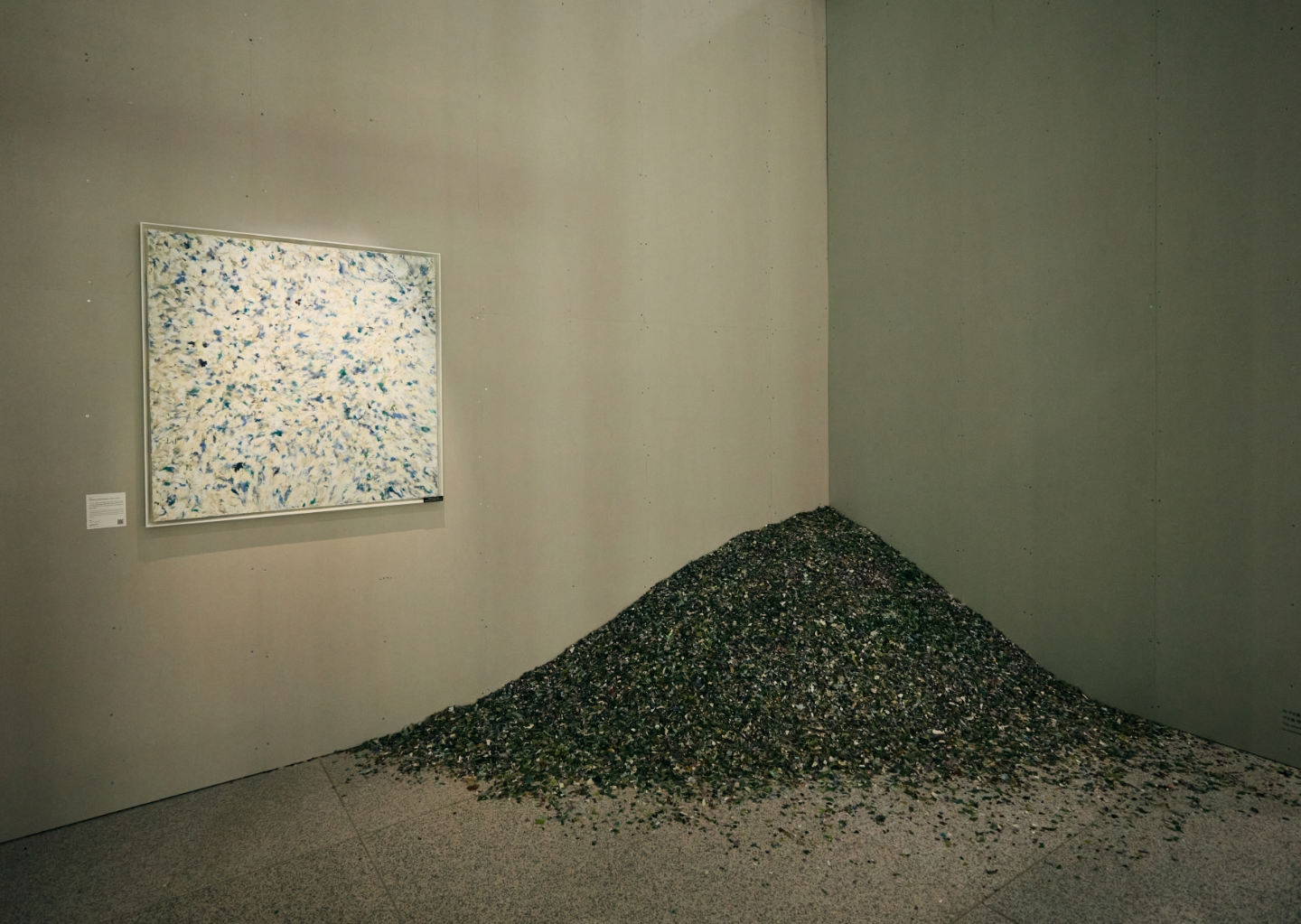
Background
What comes to your mind first when you hear ‘sustainable’?
The first thing that came to mind was recycling repeatedly every week. I also thought of not intentionally receiving disposable items when ordering food for delivery or bringing a shopping basket instead of disposable plastic when shopping.
If you’re interested in the environment, you’ll probably be more active in using refillable products or solid soap instead of regular shampoo. As such, the word “sustainable” is now permeated into the daily lives of quite a few people, but at the same time, it’s true that it still feels like something difficult and burdensome to say.
I know it’s essential in my heart, but it’s not easy to put it into action, and there have been many moments when I hesitate on my own. Perhaps we have accepted “sustainable” as a fixed form or standard of correctness? Or maybe we have left it as a story that is a little far from me, a topic that only cheers for someone’s practice.
The first thing that came to mind was recycling repeatedly every week. I also thought of not intentionally receiving disposable items when ordering food for delivery or bringing a shopping basket instead of disposable plastic when shopping.
If you’re interested in the environment, you’ll probably be more active in using refillable products or solid soap instead of regular shampoo. As such, the word “sustainable” is now permeated into the daily lives of quite a few people, but at the same time, it’s true that it still feels like something difficult and burdensome to say.
I know it’s essential in my heart, but it’s not easy to put it into action, and there have been many moments when I hesitate on my own. Perhaps we have accepted “sustainable” as a fixed form or standard of correctness? Or maybe we have left it as a story that is a little far from me, a topic that only cheers for someone’s practice.
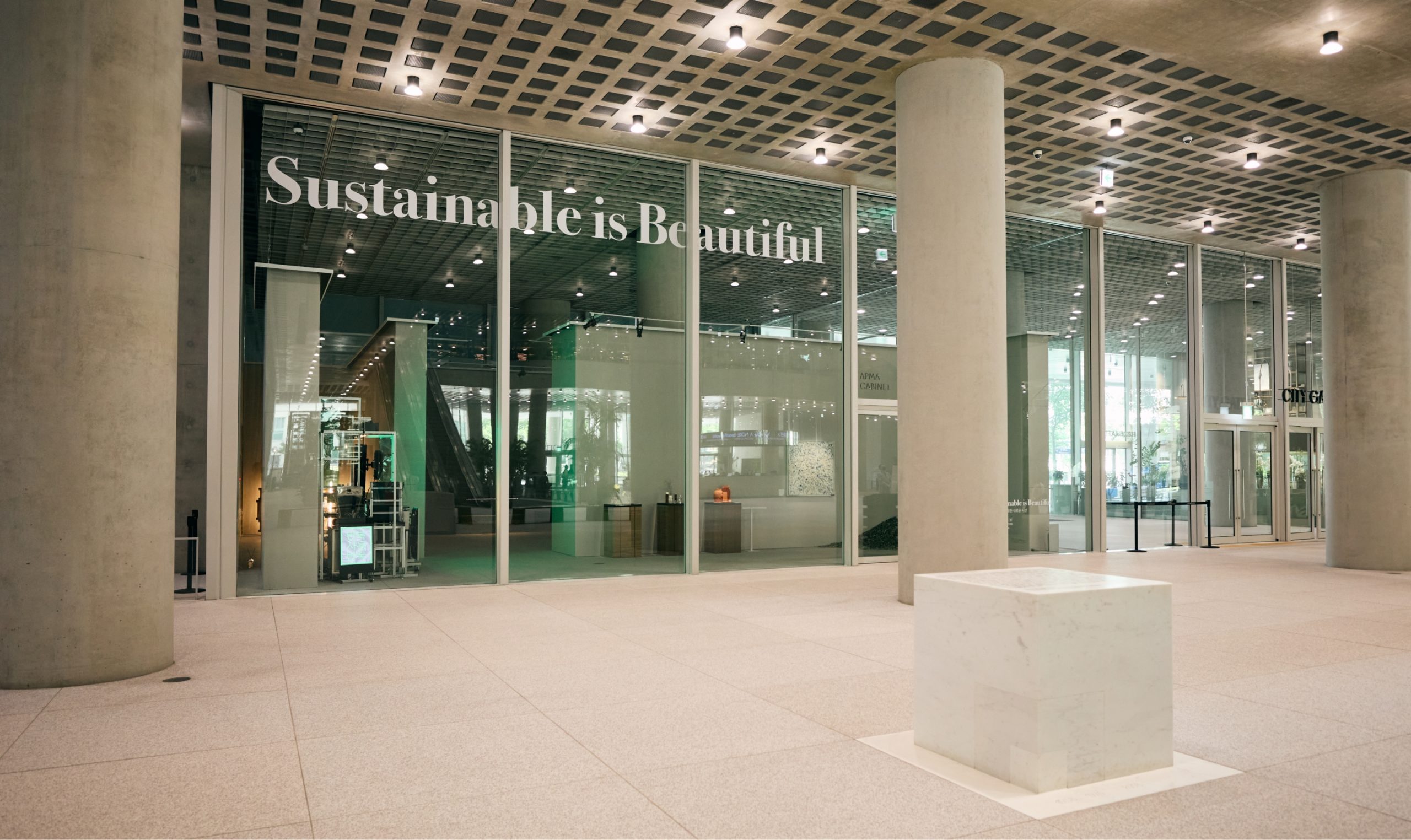
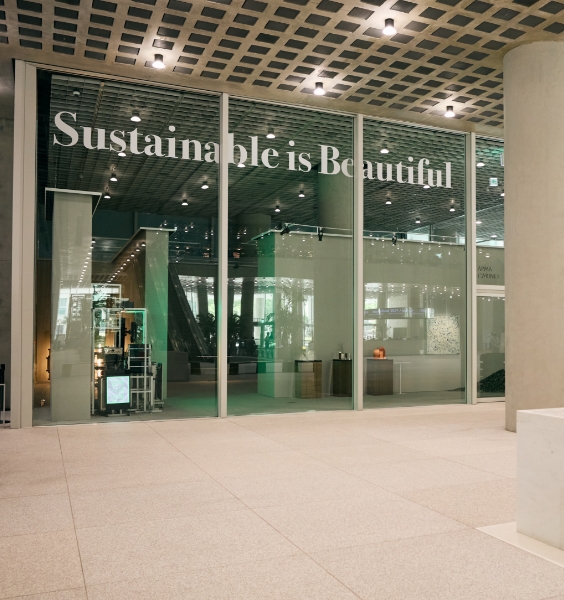
This exhibition started with that kind of concern.
Outside of the framework of sustainability that we know, we decided to look at sustainability with a slightly different perspective, asking the question, “Isn’t it okay to think like this?” and “Isn’t it possible this way?”
Listening to people who have been carrying out various activities under the theme of sustainability, you will discover practices that started with ideas that you never expected, and special meanings contained in them. In the process, we naturally feel that sustainability is not just a set number of ways. After all, what is important is to practice in your own way and continue it steadily in your own life and environment. In doing so, I believe that the word “sustainable” is not an answer that anyone has decided on, but can expand in a wider variety of directions.
Outside of the framework of sustainability that we know, we decided to look at sustainability with a slightly different perspective, asking the question, “Isn’t it okay to think like this?” and “Isn’t it possible this way?”
Listening to people who have been carrying out various activities under the theme of sustainability, you will discover practices that started with ideas that you never expected, and special meanings contained in them. In the process, we naturally feel that sustainability is not just a set number of ways. After all, what is important is to practice in your own way and continue it steadily in your own life and environment. In doing so, I believe that the word “sustainable” is not an answer that anyone has decided on, but can expand in a wider variety of directions.
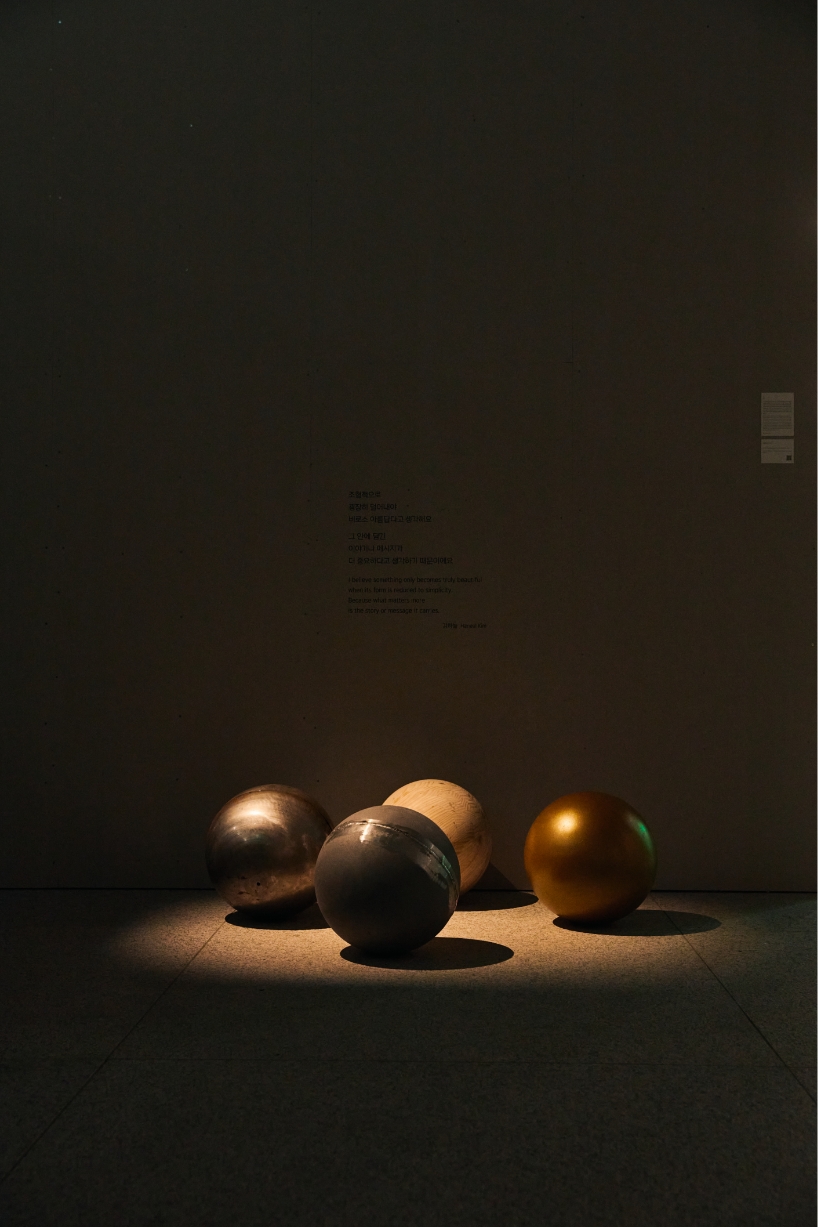
I’m not trying to say that the method I’m introducing in this exhibition is better than other methods. This
exhibition also paid more attention to the possibility of interpreting and continuing values in their own
way, rather than presenting correct answers or set directions. Sustainability is not just a matter of practice,
but also a story of how one views and continues.
In fact, there are many more ways to practice sustainability than we thought. This is because even if we go in the same direction, the form of practice can vary from person to person. However, if you have ever asked yourself questions such as, “How can I practice sustainability?” or, “Can this be sustainable?” I hope this exhibition will be a small hint about your concern. And I hope it will be an opportunity to start at least one small but meaningful practice in your daily life.
In fact, there are many more ways to practice sustainability than we thought. This is because even if we go in the same direction, the form of practice can vary from person to person. However, if you have ever asked yourself questions such as, “How can I practice sustainability?” or, “Can this be sustainable?” I hope this exhibition will be a small hint about your concern. And I hope it will be an opportunity to start at least one small but meaningful practice in your daily life.

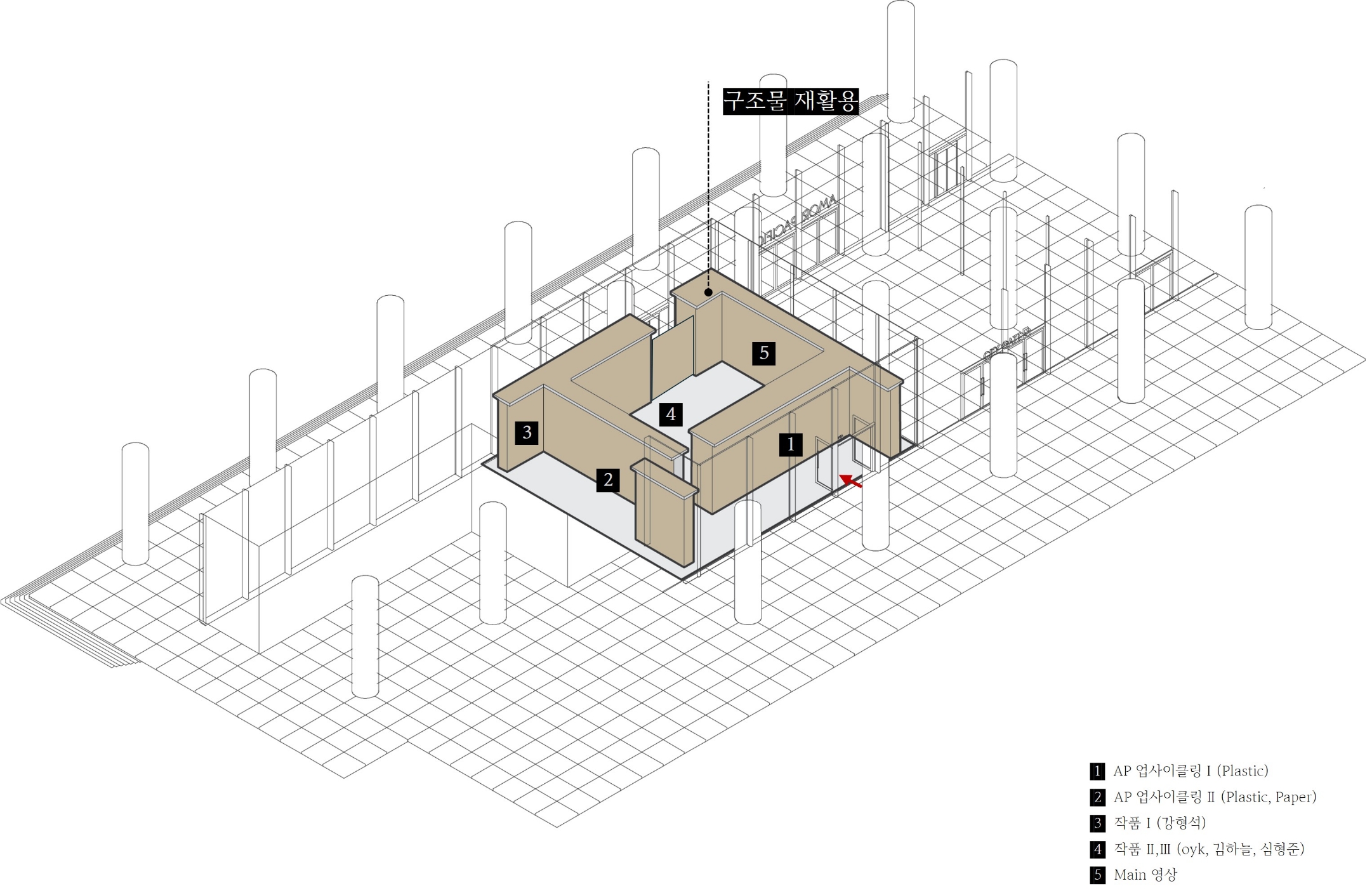
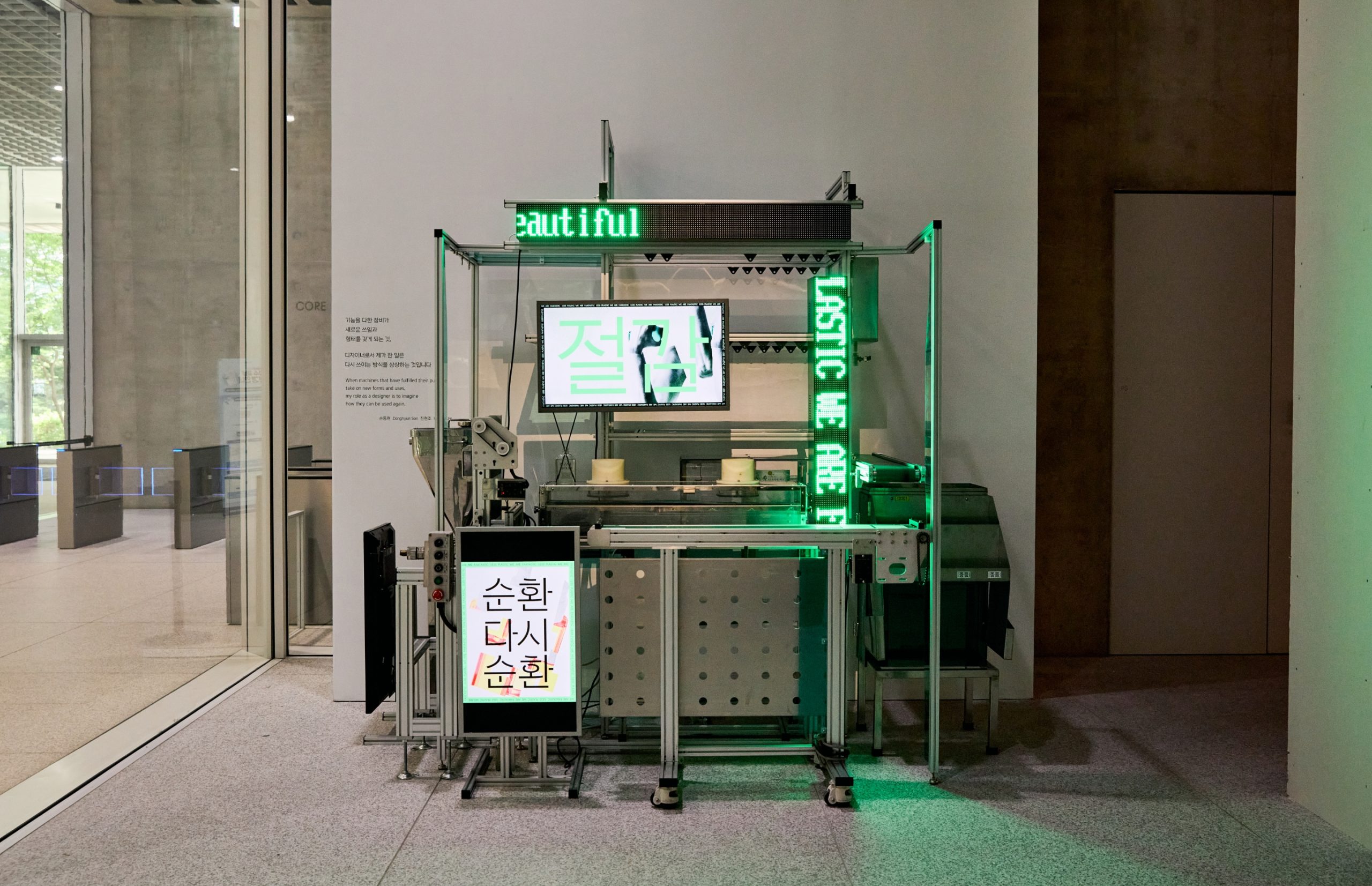
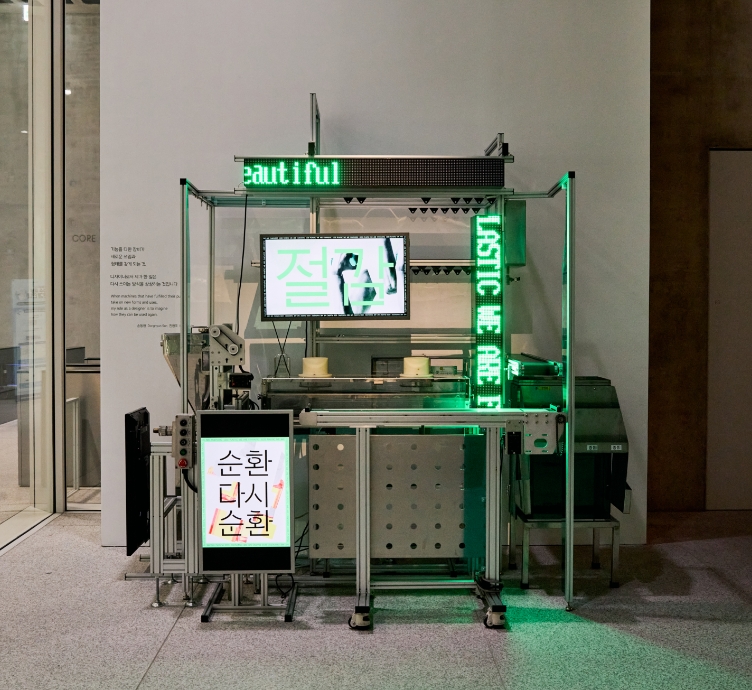
reunited
Once used in the manufacturing and packaging of cosmetics, these machines have been reimagined as objects with
new forms and functions.Alongside motion graphics from the LESS PLASTIC, WE ARE FANTASTIC campaign, we invite
you to experience the quiet beauty of things being used again.
1/plinth studio Donghyun Son
AMOREPACIFIC
Hyunjo Jin

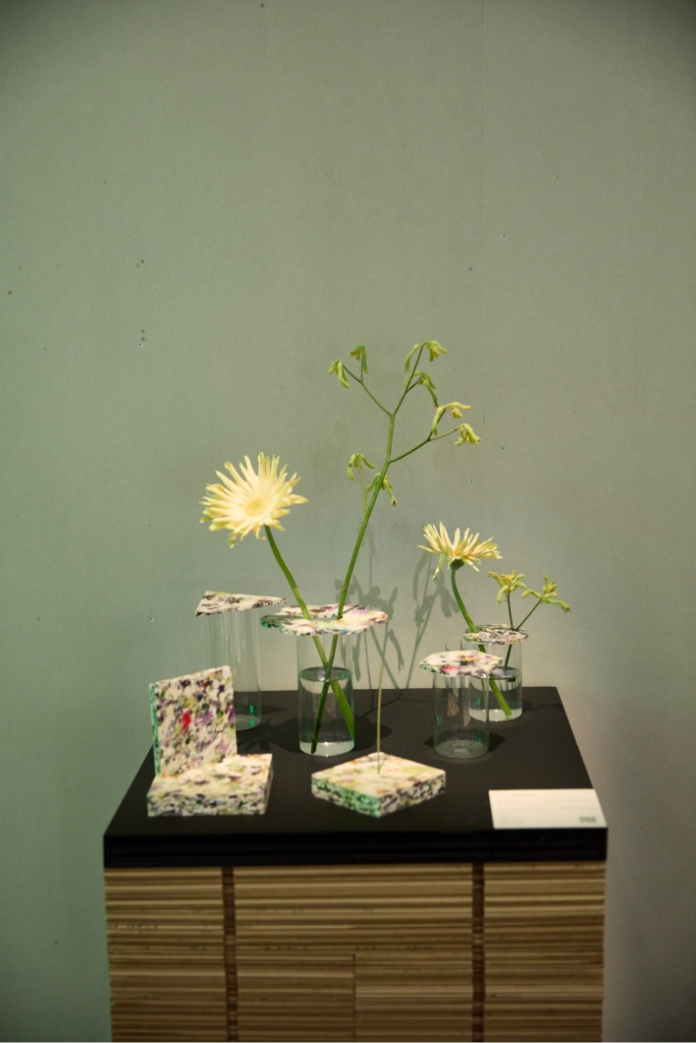
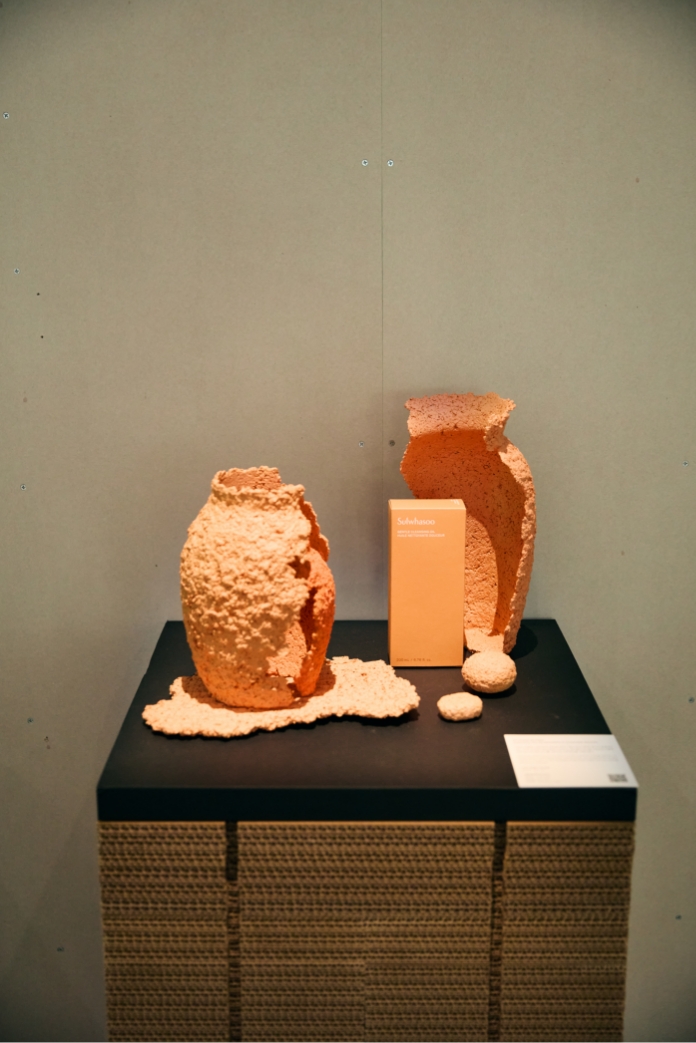
Re:Shaped #1 Glass
Exploration into the Reusability of Sustainable Materials
An object made using Plate A, a recycled plastic sheet
Re:Shaped #2 Paper
Exploration into the Reusability of Sustainable Materials
Glass has often existed as a single-use material, discarded after one cycle of use. This project began with a question of how we might keep what we have made close at hand and in use for longer, as a way of caring for nature.
This project expands the potential of Plate A, an upcycled plastic material, by exploring its use in everyday objects and lifestyle pieces to convey its value and relevance in daily life.
Although paperboard is an eco-friendly material, a large amount of waste paper is generated when making boxes. We designed the project based on research on the reusability of discarded paper and eco-friendly production methods.
Sunmin Park
TRU Junseong Park
Left Right studio Yuri Yoo
AMOREPACIFIC
Yunmi Kim,
Jiwon Kim
AMOREPACIFIC
Noah Shin
AMOREPACIFIC
Yunmi Kim,
Jiwon Kim,
Seungwon Chae
-
 Re:Shaped #1 GlassExploration into the Reusability of
Re:Shaped #1 GlassExploration into the Reusability of
Sustainable MaterialsSunmin ParkAMOREPACIFICYunmi Kim, Jiwon Kim -
 An object made using Plate A,
An object made using Plate A,
a recycled plastic sheetTRU Junseong ParkAMOREPACIFICNoah Shin -
 Re:Shaped #2 PaperExploration into the Reusability of
Re:Shaped #2 PaperExploration into the Reusability of
Sustainable MaterialsLeft Right studio Yuri YooAMOREPACIFICYunmi Kim, Jiwon Kim, Seungwon Chae
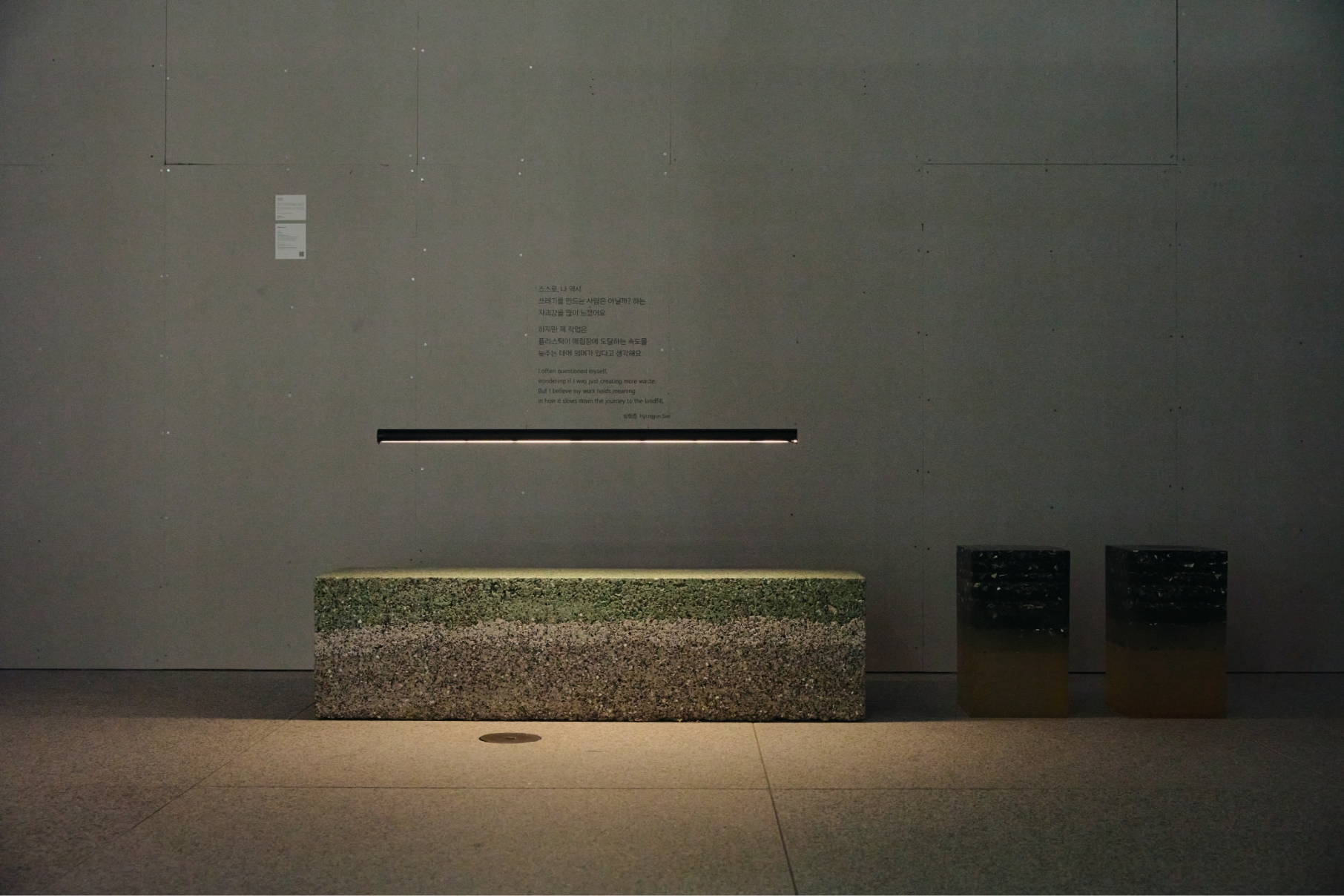
Layered Bench, Concrete, Plastic Flakes, 2000x400x450
When we sit on this bench and look at nature, we realize that the man-made can become one with nature, and that we can find new aesthetic values in it.
Decoherence
Hyongjun Sim
Layered Bench, Concrete, Plastic Flakes,
2000x400x450
2000x400x450
Decoherence
Hyongjun Sim
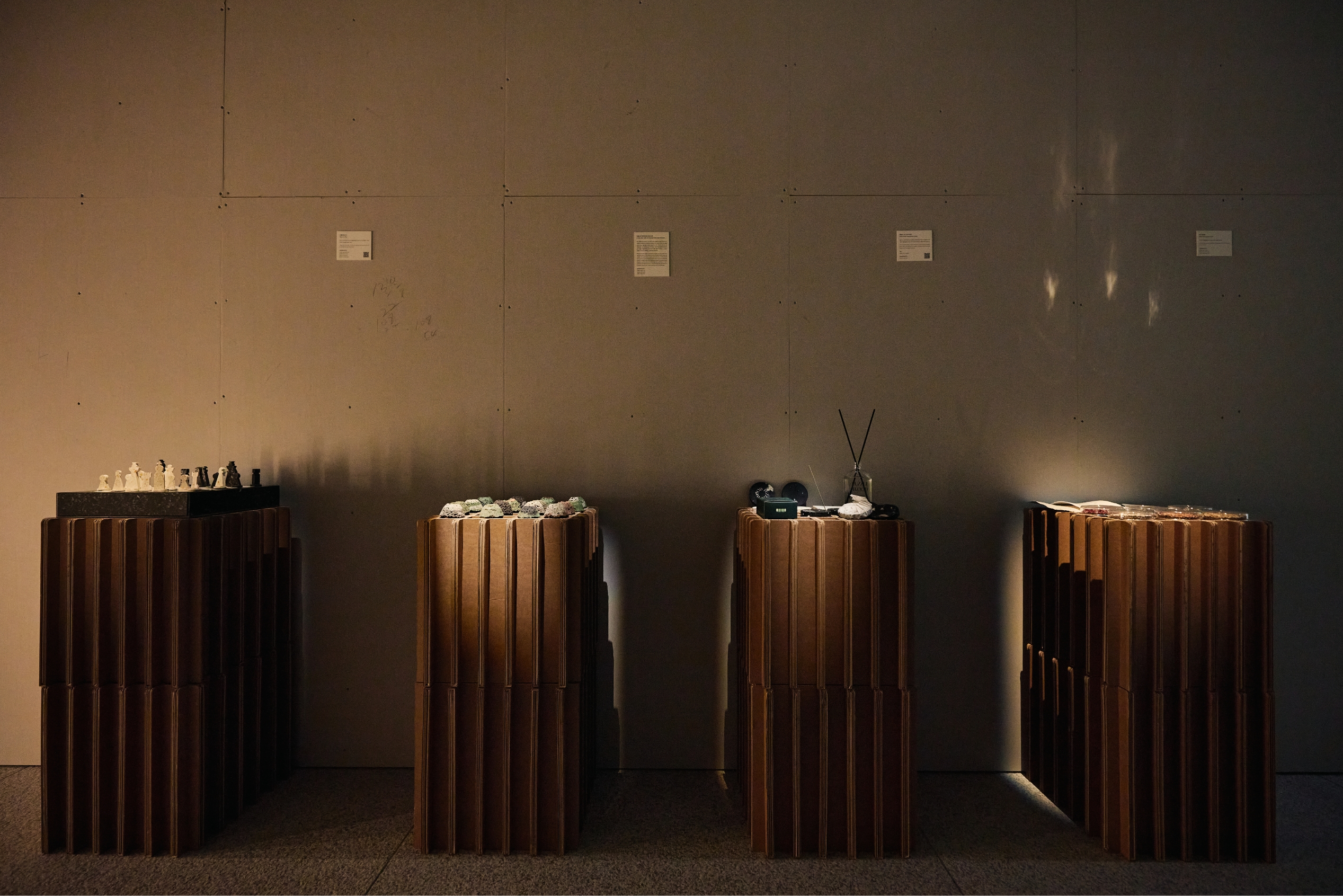
Again, We Play
AMOREPACIFIC
Sungyub Lee,
Jihyeon Kwon,
Bitnuri Kim,
Eunjeong Hyun
From Tea leaves to Stone : The Cycle of Discarded Green Tea
AMOREPACIFIC
Hyewon Koo,
Soyoung Kim,
Taeeun Kim
PUZZLE WOOD Object 1
AMOREPACIFIC
Eunji Yang
A New Regenerative Cycle
AMOREPACIFIC
Yujin Sung,
Juyeong Hwang,
Seungwon Chae
Again, We Play
From Tea leaves to Stone : The Cycle of Discarded Green Tea
PUZZLE WOOD Object 1
A New Regenerative Cycle
Crafted from Plate A, this reinterpretation of Jenga and chess questions what true sustainability means through upcycled materials. Through the classic forms of play, we imagine a more meaningful cycle for materials that never truly disappear.
A sustainability project that visually reinterprets discarded green tea waste through the philosophy of returning beauty to nature.
The Puzzlewood Object Tray is made from recycled plastic, including plastic from used Amorepacific cosmetic containers, featuring unique patterns from the original materials.
An experimental project exploring how discarded paper begins a new cycle of renewal through pulp and growth.
AMOREPACIFIC
Sungyub Lee,
Jihyeon Kwon,
Bitnuri Kim,
Eunjeong Hyun
AMOREPACIFIC
Hyewon Koo,
Soyoung Kim,
Taeeun Kim
AMOREPACIFIC
Eunji Yang
AMOREPACIFIC
Yujin Sung,
Juyeong Hwang,
Seungwon Chae
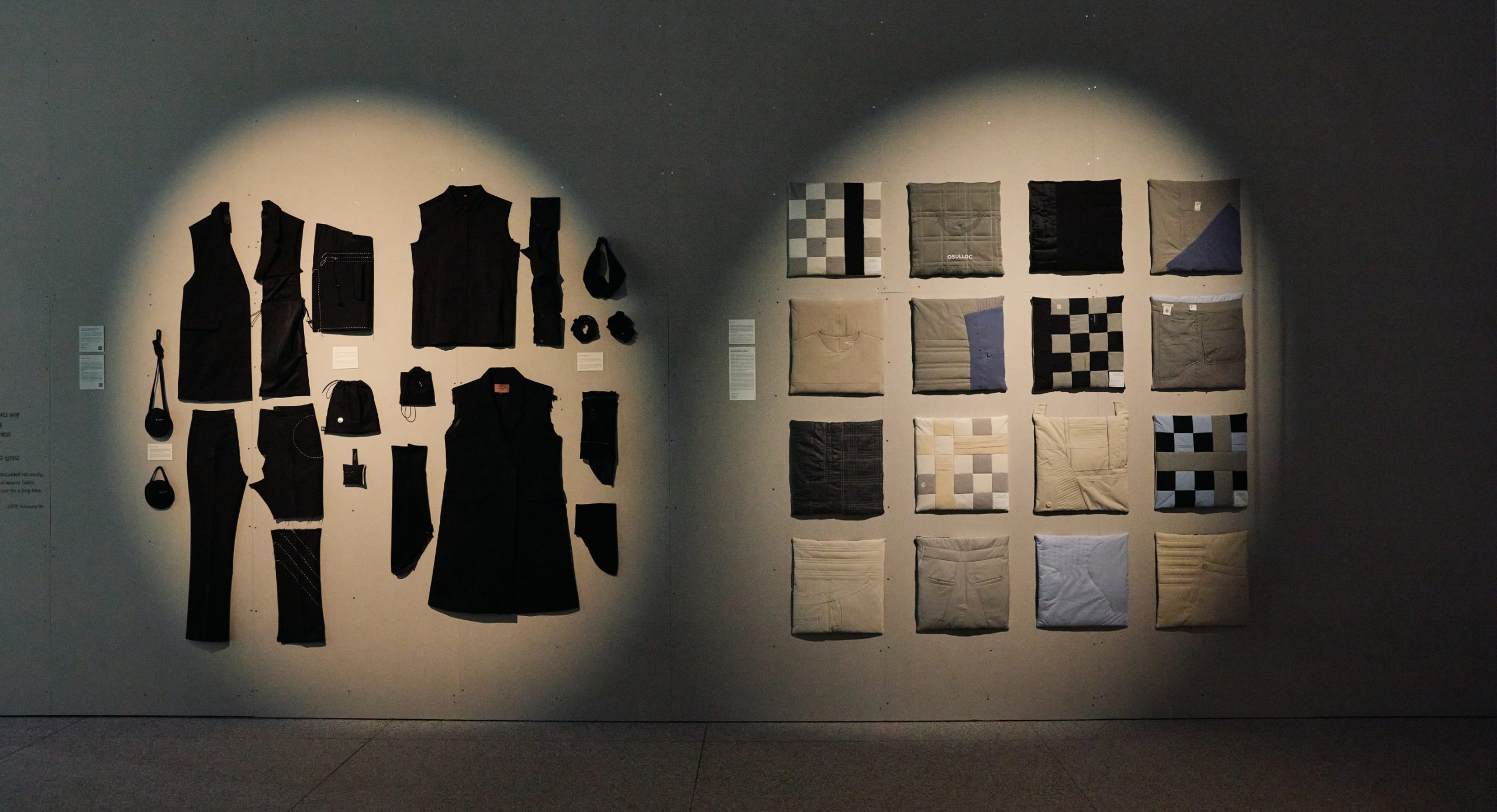
Remnants of Garments : Season 1 & 2
We collected waste uniforms from HERA Department Store’s new uniform design and proceeded to make the goods.
The design utilizes the material and characteristics of the uniforms and uses only uniforms as much as possible
for upcycling to minimize further environmental pollution. Season 2 expands the initiative by collecting and
reusing discarded uniforms from awider range of Amorepacific brands including Sulwhasoo, Laneige, HERA,AP,
and OSULLOC. Outdated designs, aged garments, and unused samples were gathered and transformed into practical
upcycled cushions, each crafted to reflect the material characteristics of the fabrics and the identity of
the brand from which they came.
STUDIO OHYUKYOUNG Yukyoung Oh
AMOREPACIFIC
Kyungjin Kim,
Kanghyeok Son
Remnants of Garments : Season 1 & 2
STUDIO OHYUKYOUNG Yukyoung Oh
AMOREPACIFIC
Kyungjin Kim,
Kanghyeok Son
- Amorepacific Creatives
- Space Design
- 진현조
- VMD Design
- 고정수
- Catapult Studio
- 이영대, 송유섭
- Photography
- 이윤진


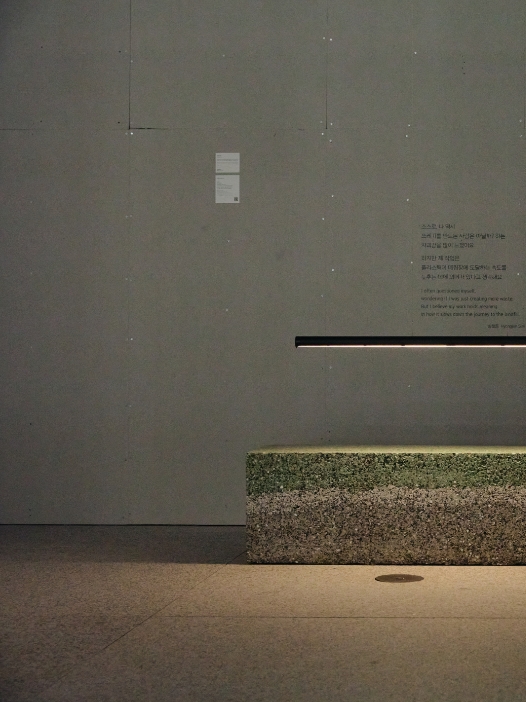

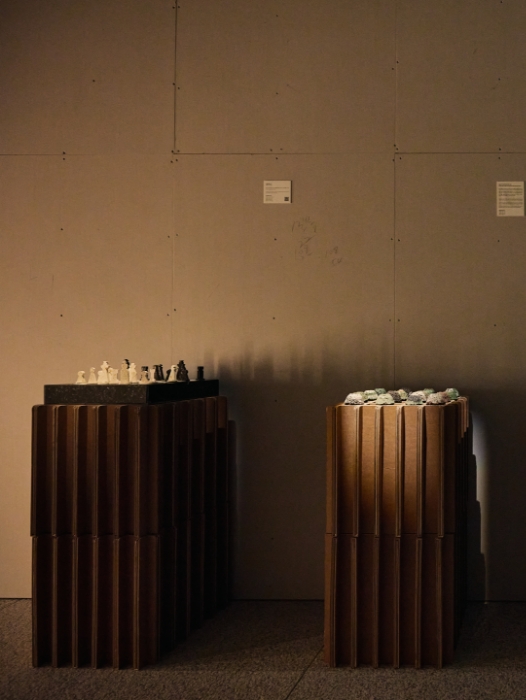
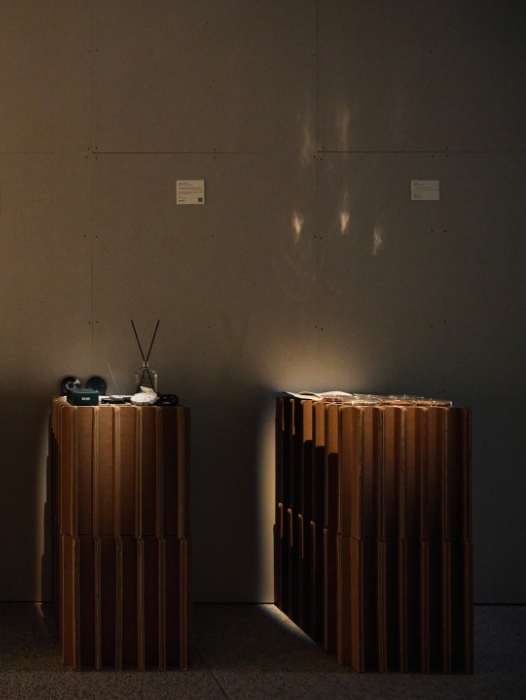

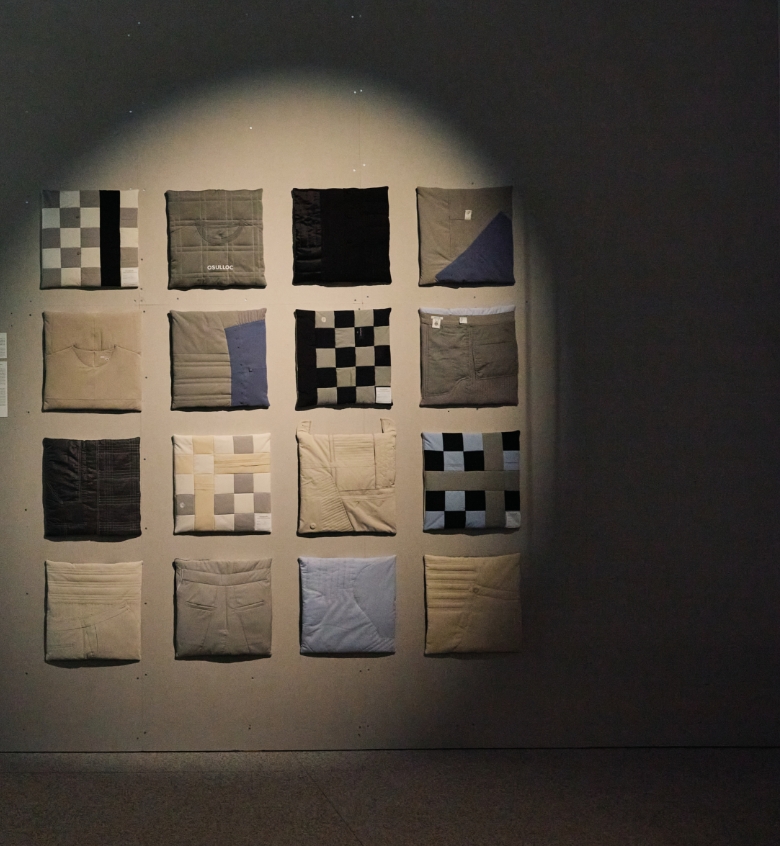







![The exhibition [HEALING TIMES]'s work list thumbnail](https://cdn-design.amorepacific.com/contents/2024/01/22132941/24_00_list_thumb.jpg)









![Exhibition [The House of Beauty Scientists] 's work list thumbnail](https://cdn-design.amorepacific.com/contents/2024/08/02172154/24_88_list_thumb.jpg)






![[EXHIBITION] The House of Beauty Scientists _Busan's work list thumbnail](https://cdn-design.amorepacific.com/contents/2025/06/26102143/25_25_list_thumb.jpg)





















